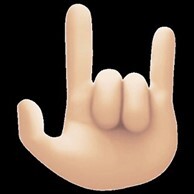
In the latest emoji trade mark law update, an EUIPO Board of Appeal has ruled that in general, emojis are not sufficiently distinctive to qualify as trade marks. This is despite the fact that they are associated with positive communication. Gerard Kelly, Head of Intellectual Property, reports on the decision and its wider impact for brand owners.
The Second Board of Appeal of the EUIPO has recently held that as a general rule, emojis are not perceived as an indication of origin and are therefore not capable of trade mark protection. This is in contrast to previous EU case law updates such as the recent EU General Court decision which permitted McCain’s EU registration representing in the shape of a smiley face to remain registered. In refusing the application at issue in this case, the EUIPO Second Board of Appeal held that the average consumer is accustomed to a large number of pictograms such as emblems and emojis which represent emotions. These emblems and emojis are generally used in private communication to express generally positive feelings, such as joy, consent, enthusiasm or happiness. The board held that these pictograms, including emojis, are perceived by the relevant public as a general advertising message or purely decorative elements which are devoid of any distinctive character. We analyse the decision and its impact.
Background
A German company called Käselow Holding Gmbh (Käselow), in December 2021, applied to register the figurative mark below as a European Union Trade Mark (EUTM).

The application sought to protect a wide range of services in Class 36 including:
- “Real estate consultation”
- “Financial services relating to real estate and buildings”, and
- “Real estate brokerage”
In addition, it also sought to protect a wide range of Class 37 services including:
- “Cleaning of buildings”
- “Building refurbishment services”, and
- “Maintenance of buildings”
Examiner’s Decision
In November 2022, the EUIPO Examiner refused the application for all of the services applied for. The Examiner held that the relevant consumer would recognise the sign as what is known as an emoticon ie. a pictogram which refers to an emotional situation. In the Examiner’s view, the sign consisted of a realistic common illustration of a hand sign with a set thumb, which is well known, comes from US sign language and is now internationally known as an “I love you” hand sign. The Examiner therefore concluded that the relevant public will simply perceive the sign as a pictogram without distinctive character. Perhaps surprisingly and contrary to the decision in the McCain case, the Examiner noted that the simple basic shape of a smiley is incapable of indicating that goods or services of any kind originate from a particular undertaking. In connection with the Class 36 and Class 37 services concerned, the consumer will merely infer from the emoji a positive connotation of a general nature, be it in the sense of an attractive decoration or as a general laudatory statement and incitement to purchase.
Appeal
Käselow filed an appeal against the Examiner’s decision on 24 November 2022, and amongst other arguments, it claimed that:
- The fact that an emoji is used in daily private communication does not mean that the sign is devoid of distinctive character.
- The sign is not an emoji which is used in everyday use. The sign differs significantly from similar representations of various platforms, and
- The targeted public within the EU is not necessarily familiar with US sign language.
Decision
The EUIPO Second Board of Appeal ultimately dismissed the appeal and held that the sign applied for was devoid of distinctive character. In deciding that the public “can certainly perceive the sign that is the subject of these proceedings as the ‘I Love You’ emoji” the Board commented that there are various variations of the ‘I Love You’ emoji. By way of example, the Board noted that the emoji is represented in the depiction below by the left-hand hand:

The relevant trade circles, the Board held, associate the specific gesture with the meaning ‘I Love You,’ and it is not decisive whether it is carried out using the right or left hand. Nor is the use of the left hand a feature capable of making the sign distinctive. Overall, it concluded that the sign in question will be perceived as a general advertising message, which means that customers will be particularly satisfied with the services offered under the sign and will think of them on account of their satisfaction with loved affection.
Comment
Given the ongoing inconsistency between trade mark offices and Courts with regard to 3D trade marks and shape marks in particular, this may not be the end of the case and Käselow may yet decide to pursue matters further by appealing the Board of Appeal’s decision to the General Court of the EU. Interestingly, the Board of Appeal commented that pictograms are often devoid of distinctive character because they are:
- Simple geometric shapes
- Design elements customary in advertising
- Stylised instructions on the use of the product or the reproduction of the product itself
This is arguably at odds with the McCain decision, where the General Court held that the smiley face shape in itself was inherently distinctive and continues to be perceived as an indication of origin when used on potato chip products. In the present case, the Board also noted that emojis function as a parallel language, which convey a nuanced meaning and make it easier to express feelings. For that reason, they are often connected with positive communication and the Board decided that they are not therefore perceived as an indication of origin. This begs the question that if the sign is deemed to be connected with negative communication as opposed to a positive communication, if the opposite decision would therefore be reached by the EUIPO. Despite the difficulties illustrated by the decision with registering an emoji as a trade mark, brand owners should be aware that, as an alternative strategy, it may be possible to obtain a registration if it can be shown that the emoji has acquired distinctiveness as a result of the use made of it.
For expert advice on successfully protecting your organisation’s IP rights in 2023, contact a member of our Intellectual Property team.
The content of this article is provided for information purposes only and does not constitute legal or other advice.
Share this:





